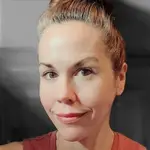A French leader in the surrealist movement, Claude Cahun was a pioneering queer artist whose self-portraits played with gender identity in a way that had never been seen before.
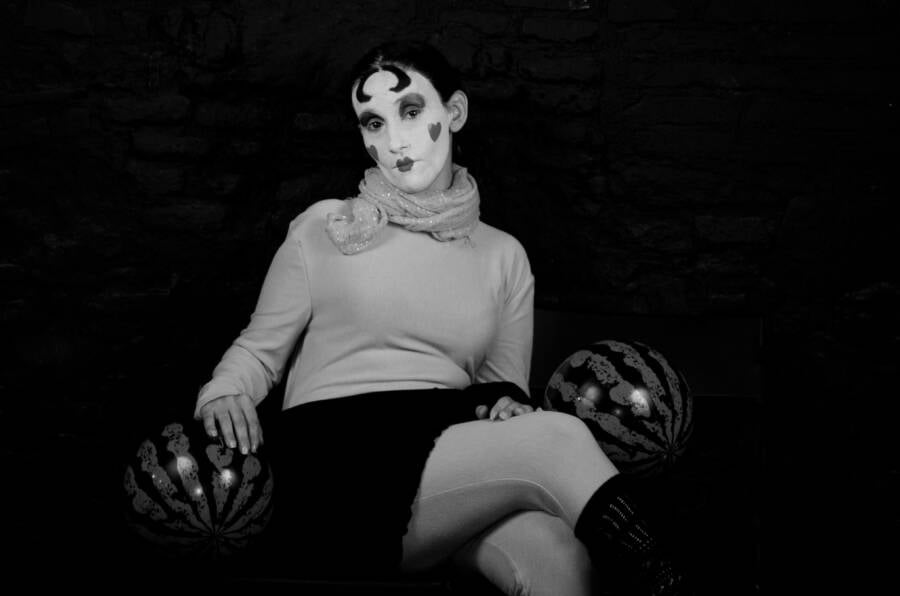
FlickrSelf Portrait from the series I Am In Training Don’t Kiss Me, 1927.
Photographer, essayist, mixed-media artist, performer, activist, and Nazi resistor. Claude Cahun assumed all these titles during her life in France during the early twentieth century.
Cahun was decades ahead of her time. As a young adult, she swapped her birth name for a gender-neutral one and, through her self-portrait photography, blurred gender lines when it was far from the norm to do so. Her work inspired the likes of André Breton, David Bowie, and many others.
This is the incredible story of Claude Cahun, history’s often-overlooked queer artist and activist.
Claude Cahun’s Early Life In France
Born in Nantes, France in 1894, Cahun was given the name Lucy Renée Mathilde Schwob. Her mother struggled with mental illness, and her father, who was Jewish, was a prominent newspaper owner. At the time, anti-Semitism was on the rise, creating a tense environment that would help shape Cahun’s worldview.
When her mother moved into a mental hospital, Cahun moved in with her grandmother. Here, instead of simply engaging in more traditional activities like embroidery or sewing, they read together. According to Que Me Veux-tu?: Claude Cahun’s Photomontages, subjects like philosophy, art, literature, and mythology filled their days.
After Cahun began to experience anti-Semitic attacks from her classmates, her family sent her to continue her studies in England. Later, Artnet reports, she attended the University of Paris in Sorbonne.

vintag.esClaude Cahun in 1922.
An Artist Decades Ahead Of Her Time
By the age of 18, Claude Cahun (who would soon change her name from Lucy to the gender-neutral French moniker) was exploring the world — and her own identity — via poetry and photography.
Notably, Cahun mainly used she/her pronouns during her lifetime. However, those familiar with both Cahun and the historical context in which she lived sometimes refer to the artist using they/them pronouns. According to Art and Object, some scholars have speculated that Cahun may have been transgender or non-binary.
“Shuffle the cards. Masculine? Feminine? It depends on the situation,” Cahun once said. “Neuter is the only gender that suits me.”
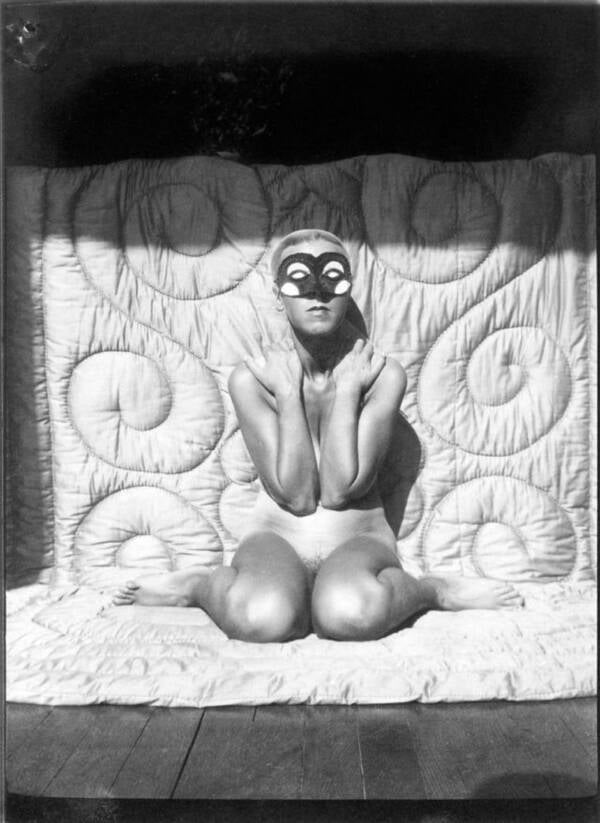
vintag.es Claude Cahun, masked self-portrait, 1929.
In her self-portrait photos, Cahun used makeup, props, and costumes to explore a variety of personae that offered different expressions of gender, challenging audience assumptions about gender roles. Often, she would shave her head and dress like a man (despite cross-dressing being illegal in France at the time) who then dressed as a woman.
“Under this mask, another mask. I will never be finished removing all these faces,” Cahun said, according to Artnet.

vintag.esPerhaps Cahun’s most famous (and most widely reproduced) photo, from 1927.
Claude Cahun’s Partnership With Marcel Moore
Often, it is hard to find separate biographies of Claude Cahun and her artistic collaborator and romantic partner, Marcel Moore (born Suzanne Malherbe). There was rarely a time when they were not together, influencing each other and working together on nearly every project. They seemed like two sides of the same coin.
The two met as teenagers and began a romantic relationship. But their relationship did not come without complications. Indeed, the two were gay at a time when same-sex couples generally were forced to keep their relationships secret in public.
Then, years after the couple met, Cahun’s newly-divorced father ended up marrying Moore’s widowed mother. Now stepsisters, Cahun and Moore were able to live together and stay under the radar, sometimes portraying themselves in public as close siblings.
Eventually, they moved into an apartment in Paris, which became a gathering place for bohemians and surrealists. Among them: Salvador Dalí, Jean Cocteau, Man Ray, Gertrude Stein, Georges Bataille, and surrealist movement leader André Breton, the latter of whom called Cahun “one of the most curious spirits of our time.”
Immersed in this vibrant cultural scene, the couple became an inseparable collaborative duo, spending their lives turning the world on its head with their surrealist photography and illustrations.
In 1937, Cahun and Moore retired to the British island of Jersey, hoping to escape looming threats of fascism and settle down. They went back to using their assigned names and became the artistic eccentrics of their neighborhood. Cahun spent her days walking their cat on a leash, often while wearing trousers or costumes, and making avant-garde art.
However, it was the couple’s undercover Nazi resistance tactics that made the most waves in this chapter of their lives. For these actions, they were arrested and sentenced to death.

Wikiart/Fair useClaude Cahun in 1929.
‘Paper Bullets’: Cahun and Moore’s Anti-Nazi Propaganda
According to Lithub, World War II came to Britain in 1940 when Luftwaffe planes bombed the defenseless Island of Jersey, forcing a surrender. The artists despised everything the Nazis stood for, and Claude Cahun — along with Marcel Moore — took on the burden of active resistance.
In a stroke of inspiration, they took a photograph from a German magazine that showed soldiers marching. “The soldiers in the photo are marching vigorously,” Cahun later wrote, according to The Art Newspaper. “They’re swinging their arms as they move, but their legs are very boring, and their boots are covered in mud. It’s as though they are stuck in the mud.”
Cahun tore the photo, keeping the bottom half. She scrawled above it in red paint, “our jingle” — ohne Ende (without end), portraying the soldiers as trudging endlessly and meaninglessly through the mud and grime. Cahun then framed it, and utilizing intel about where soldiers would soon be housed nearby, hung it in their sleeping quarters.
This was the first act in the couple’s four-year stint producing hundreds of anti-German propaganda pieces they called “paper bullets.” Sometimes these were tiny, handwritten messages in cigarette packs; other times they were entire photo montages sneakily tucked into German magazines at newsstands.
With an artistic and rebellious wit, Cahun and Moore sought to sow confusion and doubt among the ranks of German soldiers. They created poems, bad Hitler jokes, drawings, and even messages in a fake secret code. They left the paper bullets on restaurant tables, inside bottles they threw into the bay, and on fence posts. They even slipped papers into soldiers’ pockets on the sly.
The Secret Field Police spent years trying to track down the perpetrators. On July 25, 1944, they finally did.
Nobody believed that two middle-aged women could orchestrate such acts of resistance alone. According to the National Portrait Gallery, when the couple were eventually arrested and sentenced to death for the crimes of listening to the BBC and distributing anti-Nazi propaganda, they were assumed to be part of a wider network of resistors.
They served eight months in a prison in St. Helier until May 8, 1945, when Jersey was liberated. Freedom was theirs once more.
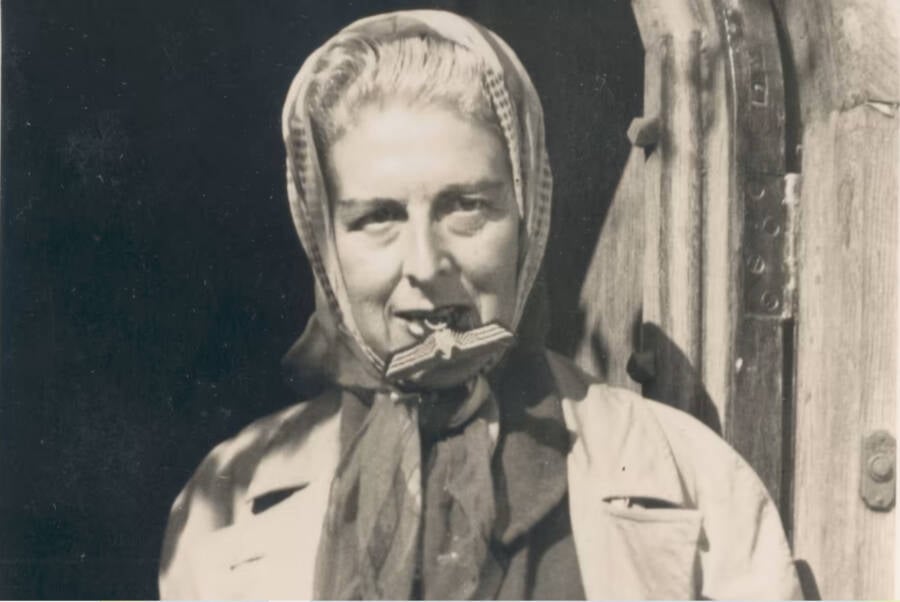
Jersey Heritage CollectionsClaude Cahun pictured with a Nazi medal between her teeth, 1945.
The Legacy Of Claude Cahun
For much of her life, Claude Cahun suffered from health problems. Her time in prison exacerbated her illness, and her health continued to decline even after her release. Sadly, she died from a kidney tumor in 1954. She was just 60 years old. Moore buried her at St. Brelade’s Church in Jersey right next to their one-time home, Jersey Heritage reports.
Cahun made a huge impression within the surrealist art world, even though she reportedly never promoted or sold her work. It was all for the sake of self-expression. After her death, her artwork remained obscure — that is, until it all became suddenly relevant again.
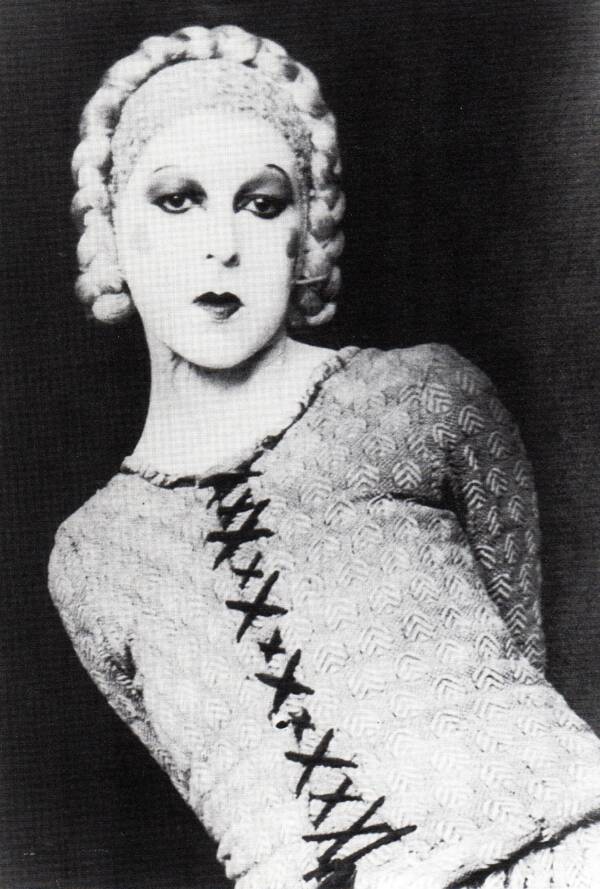
Flickr
Self-portrait, 1929.
During the 1990s, her art received renewed attention. A museum in Paris held an exhibition, and François Leperlier published the book Claude Cahun: Masks and Metamorphoses about Cahun’s life and work. Her art has been featured in London’s Tate, The Metropolitan Museum of Art, The Museum of Modern Art in New York, San Francisco Museum of Modern Art, and more.
“In Cahun you’ve got an artist who turns the camera on themselves to see who else they can become,” David J. Getsy, a professor at the Art Institute of Chicago who specializes in gender and sexuality in art, told the New York Times. “Isn’t that what we’re all doing now with cellphone photos?”
David Bowie, also known for his gender fluidity, spoke of a 2007 Claude Cahun photography show on his own blog, writing, “I find this work really quite mad, in the nicest way.”
Marcel Moore tragically died by suicide in 1972. She was laid to rest next to Claude Cahun in St. Brelade’s Cemetery. A shared tombstone commemorates their lives.
Next, read about history’s first non-binary preacher who brought women’s rights to colonial America. Then check out these LGBTQ soldiers nearly forgotten by history.

